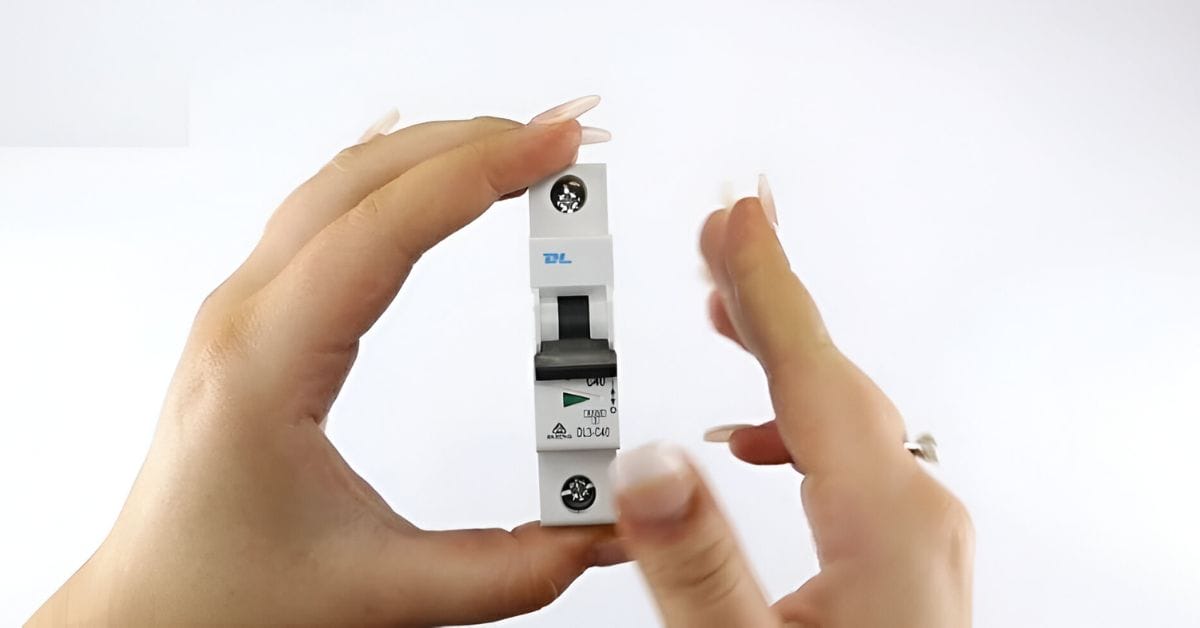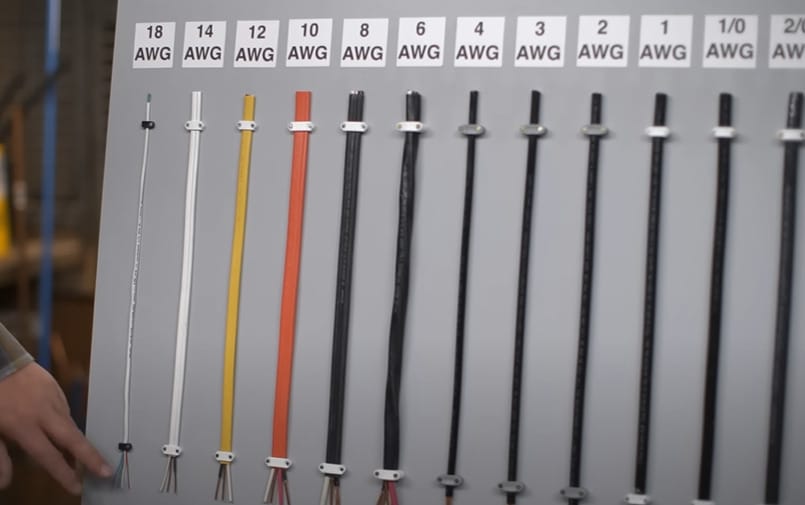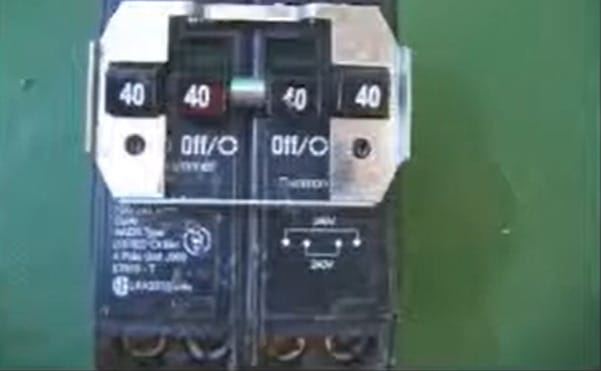What Size Wire for a 40 Amp Breaker (Guide)

Ever found yourself scratching your head, wondering what size wire you need for a 40 amp breaker? You’re not alone. It’s a common question that pops up when you’re dealing with electrical installations.
For a 40 amp breaker, use 8 AWG copper wire for runs under 50 feet. For runs over 50 feet, upgrade to 6 AWG wires to prevent voltage drops and ensure safety.
I’ll guide you through the essentials in this article, ensuring you get it right first. Stick around as we delve into the nitty-gritty of wire sizes for a 40 amp breaker, making your DIY electrical projects a breeze.
Basic Concepts of Electrical Wiring
Let’s move forward with the basics of electrical wiring. If you’re a DIY enthusiast like me, this part is a goldmine of information.

Electrical wires come in different sizes, also known as “gauges.” When we say wire gauge, we’re referring to the diameter of the wire. Here’s something to remember: the higher the gauge number, the smaller the wire.
Now, let’s talk about amps and breakers. In electrical terms, ‘amp’ is short for ampere, the unit measuring electrical current. Your breaker’s job is to ensure the current does not exceed its rated amperage.
What happens when it does, you ask? It trips as a safety measure, cutting off power to prevent overheating and potential fire hazards.
Let’s consider a table to highlight some common wire gauges and their corresponding maximum amperes at a temperature rating of around 60°C:
| Wire Gauge | Maximum Amps |
|---|---|
| 14 | 15 |
| 12 | 20 |
| 10 | 30 |
| 8 | 40 |
| 6 | 55 |
| 4 | 70 |
Determining the Correct Wire Size for a 40 Amp Breaker

When it comes to electrical wiring, let me tell you, safety isn’t just important; it’s everything. Especially when you’re dealing with something like a 40-amp breaker. Getting the wire size right is crucial here.
In my experience, you’re generally looking at an 8-gauge wire. This size can handle up to 40 amps of electrical current, perfect for your 40 amp breaker needs.
The length of the wire is a big deal, too. I’ve learned this the hard way. If you’re running wire over 50 feet, you must step up to a 6-gauge wire. This helps prevent any loss of voltage, which can be a real issue in longer runs.
| Wire Gauge | Maximum Amperes | Length |
|---|---|---|
| 8-gauge | 40 amps | Up to 50 feet |
| 6-gauge | 55 amps | Over 50 feet |
Always chat with a certified electrician to ensure everything’s safe and up to code. They’re the pros who can help you navigate through this maze safely. Trust me, expert advice can save you from many headaches later.
Factors Affecting Wire Size Selection

Picking the right wire size for your electrical project is more than just playing match-up with the amp rating of a breaker.
Let me walk you through a couple of key factors that matter when you’re making this decision – and trust me, I’ve learned these the hard way on various projects.
Wire Run Length
This is how far your wire needs to travel from the breaker to whatever it’s powering. Long wire runs can lose energy, a phenomenon we call voltage drop.
From my experience, for a 40 amp breaker, you’ll typically use an 8-gauge wire. But here’s the kicker: if your wire run goes beyond 50 feet, you will want to step it up to a 6-gauge wire to prevent that energy loss.
Ambient Temperature
Wires, like us, have their limits when it comes to temperature. When it gets hot, wires can resist more electricity flow, which might mean you need a beefier wire than usual.
I remember working on a project in a really hot attic, and let me tell you, ambient temperature is no joke for wire selection.
Local Electrical Codes
These can vary a lot, and they’re there for your safety. I’ve seen DIY projects go south because of ignoring these codes.
Always check with a certified electrician to ensure you align with these local regulations. It’s like having a roadmap in a maze – making everything smoother and safer.
So there you have it. Choosing the right wire size isn’t just a technical decision; it’s about understanding the environment and sticking to the rules. And when in doubt, reach out to a pro – it’s always better to be safe than sorry in the world of electrical DIY.
Safety Considerations
Regarding electrical work, safety must always be your primary concern. Dealing with a 40 amp breaker requires careful planning and the right size wire. So, let’s dive into the safety considerations associated with this task.
Insulation On Your Wires
Different materials are cut out for different environments and temperatures. Working with a 40 amp breaker, you will likely come across THHN or THWN insulation. These are solid choices, but you’ve got to consider the environment they’ll be in. I recall a project in a damp basement where the right insulation was critical to prevent mishaps.
Overcurrent Protection
Matching your breaker to your wire size is essential to prevent overheating or fire risks. If you’ve got a 40 amp breaker, you need a wire that’s up for the task. Upsizing the wire might seem a good idea, but trust me, it’s like trying to fit into a shoe three sizes too big.
Installation Process
I’ve seen what happens when it’s wrong and is not pretty. A bad installation is a disaster waiting to happen. I ensure everything’s powered down whenever I’m working on a project. And gear up – safety glasses, gloves, and a face shield are necessary.
Remember, playing it safe with electricity isn’t just smart; it’s necessary. Do it right, and you’ll sleep better at night.
Troubleshooting Common Issues with 40 Amp Breakers
Hey there, fellow DIY enthusiasts! If you’ve ever dabbled in home electrical projects, you know that things don’t always go as planned.
Let’s dive into some common issues you might encounter and how to tackle them head-on. I’ll share some tips and tricks from my experiences so you can get it right the first time.
| Problem | Possible Cause | My Solution |
|---|---|---|
| Voltage Drops | Extended Wire Length | If your wire run is too long, you might experience a voltage drop. I’ve seen this happen on larger projects. The fix? You might need thicker wire, or consider installing a sub-panel closer to the appliance. |
| Breaker Tripping | Overloaded Circuit | A tripping breaker is a clear sign of an overloaded circuit. I remember we had to split a heavy load across two breakers to solve this. Ensure your circuit isn’t overloaded and your appliances are correctly balanced. |
| Heating Wires | Undersized Wire | If you notice your wires heating up, it’s a big red flag. This happened to me once; the wire gauge was too small for the load. Double-check that your wire size matches the breaker’s capacity. |
| Flickering Lights | Loose Connections | Flickering lights can be a sign of loose connections. Last summer, we tightened all connections in the breaker box on a job, and the problem was solved! Always ensure your connections are tight and secure. |
| Unresponsive Breaker | Faulty Breaker | Sometimes, the breaker itself is the culprit. I’ve had to replace a few faulty breakers in my time. If your breaker isn’t functioning correctly, it might be time for a replacement. |
Remember, safety comes first! Don’t hesitate to call a professional if you’re unsure about anything. Electrical work is no joke, and it’s always better to be safe than sorry.
Maintenance and Long-Term Care Tips for Your Electrical System
Alright, DIYers and home-care enthusiasts! Let’s talk about keeping that electrical system in tip-top shape. Over the years, I’ve learned that a little maintenance goes a long way, especially regarding your home’s wiring.
Here are some insider tips and personal experiences on maintaining your electrical system, checking for wear and tear, and knowing when it’s time for an upgrade or replacement.
- Regular Inspections. On a project a while back, we found old fraying wiring – a fire waiting to happen. Since then, I’ve made it a point to inspect wiring, especially in older homes, regularly. Check for any visible signs of damage like frayed wires, discoloration, or burn marks.
- Tighten Connections. Loose connections can cause a world of problems. I walk around the house with a screwdriver every few months to tighten loose outlets or switch plates. It’s a simple step, but it can prevent many issues.
- Watch for Warning Signs. Don’t ignore these signs if your lights flicker, breakers trip often, or outlets feel warm. I learned this the hard way when I had to overhaul an entire circuit due to overheating.
- Clean and Dust. Dust and debris can accumulate in your electrical panels. I remember cleaning out a panel that hadn’t been opened in years – it was a dust bunny haven! Keep your panels clean to prevent any potential hazards.
- Upgrade When Necessary. Technology and safety standards evolve. Consider upgrading if your home still has old aluminum wiring or lacks GFCI (Ground Fault Circuit Interrupter) outlets in wet areas. I’ve seen older wiring systems struggle under modern electrical demands.
- Professional Assessments. Sometimes, the best maintenance is a professional assessment. I always advise getting a licensed electrician to do a thorough checkup every few years, especially before major renovations.
- Know When to Replace. Not all issues can be fixed with a quick repair. If your wiring is old or experiencing consistent problems, it might be time to consider a replacement. We replaced old knob-and-tube wiring during one remodel, vastly improving the home’s safety and functionality.
- Keep Records. Always keep a record of any electrical work done. This helps in future troubleshooting and maintenance. I keep a folder with all the details of the electrical work I’ve done in my home – it’s a lifesaver!
With these maintenance and care tips, you’ll ensure a safe and efficient electrical system for years. Stay safe, and happy maintaining!
References
Organizations:
- National Fire Protection Association (NFPA). https://www.nfpa.org/en
- National Electrical Contractors Association (NECA). https://www.necanet.org/
Books:
- DEWALT Electrical Code Reference: Based on the 2020 NEC. https://www.nantucketbookpartners.com/book/9780357371794
- Electrical Wiring Residential (MindTap Course List). https://www.abebooks.com/9780357366479/Electrical-Wiring-Residential-MindTap-Course-0357366476/plp
Website Resources:
- Home Inspection Insider. https://homeinspectioninsider.com/40-amp-wire-size/
- Bates Electric. https://bates-electric.com/what-size-wire-for-40-amps/
Video References:
This Old House
David Crawford
Sparky Direct
